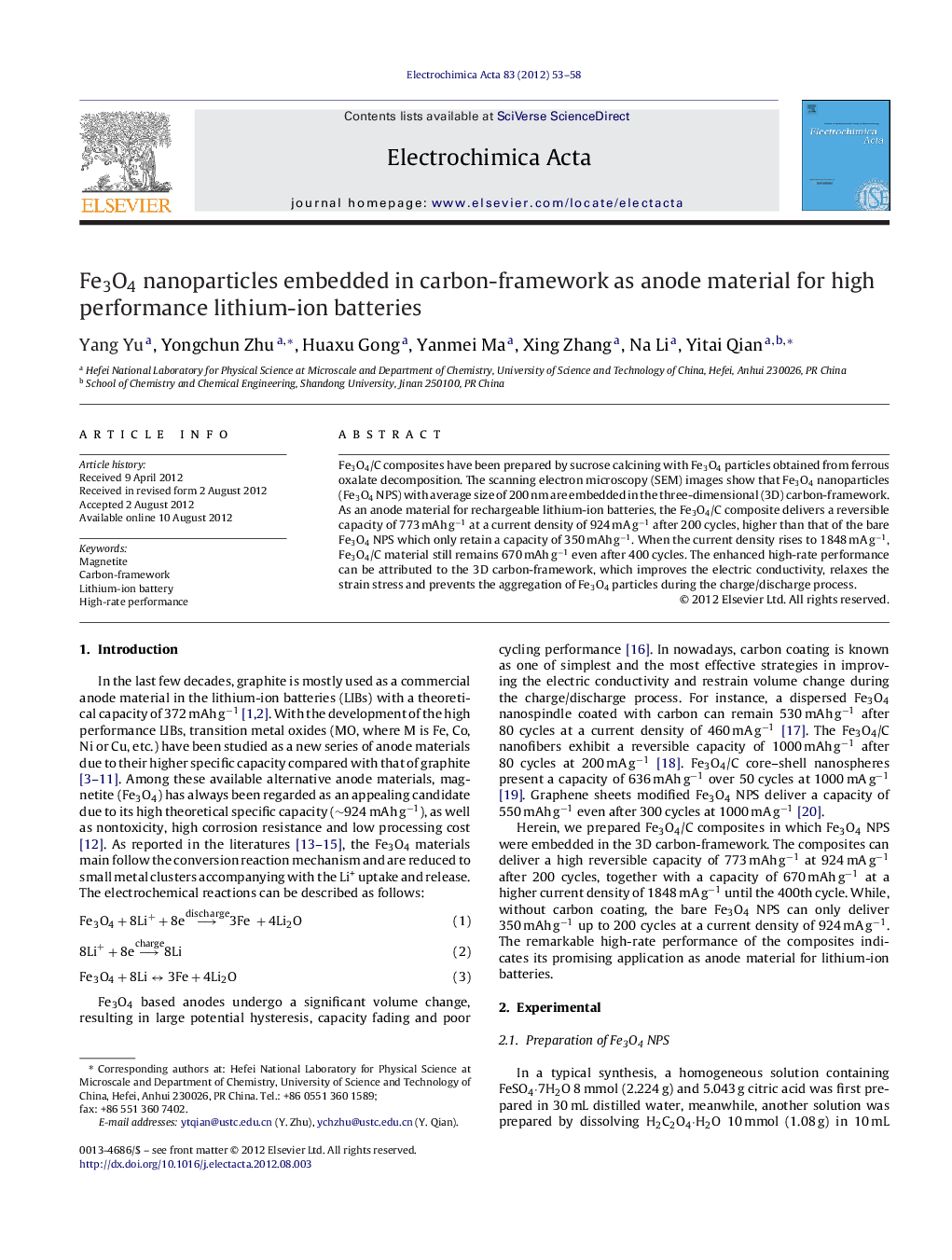| Article ID | Journal | Published Year | Pages | File Type |
|---|---|---|---|---|
| 188060 | Electrochimica Acta | 2012 | 6 Pages |
Fe3O4/C composites have been prepared by sucrose calcining with Fe3O4 particles obtained from ferrous oxalate decomposition. The scanning electron microscopy (SEM) images show that Fe3O4 nanoparticles (Fe3O4 NPS) with average size of 200 nm are embedded in the three-dimensional (3D) carbon-framework. As an anode material for rechargeable lithium-ion batteries, the Fe3O4/C composite delivers a reversible capacity of 773 mAh g−1 at a current density of 924 mA g−1 after 200 cycles, higher than that of the bare Fe3O4 NPS which only retain a capacity of 350 mAh g−1. When the current density rises to 1848 mA g−1, Fe3O4/C material still remains 670 mAh g−1 even after 400 cycles. The enhanced high-rate performance can be attributed to the 3D carbon-framework, which improves the electric conductivity, relaxes the strain stress and prevents the aggregation of Fe3O4 particles during the charge/discharge process.
► Fe3O4 nanoparticles are embedded in the three-dimensional carbon-framework. ► Carbon layers and Fe3O4 nanoparticles bulid a special micro-nanostructure. ► Carbon-framework favors fast electrons transportation during the charge/discharge process. ► Carbon-framework improves the cyclic stability of the composite. ► Fe3O4/C composite show higher capacity retention in comparison with that of Fe3O4 nanoparticles.
